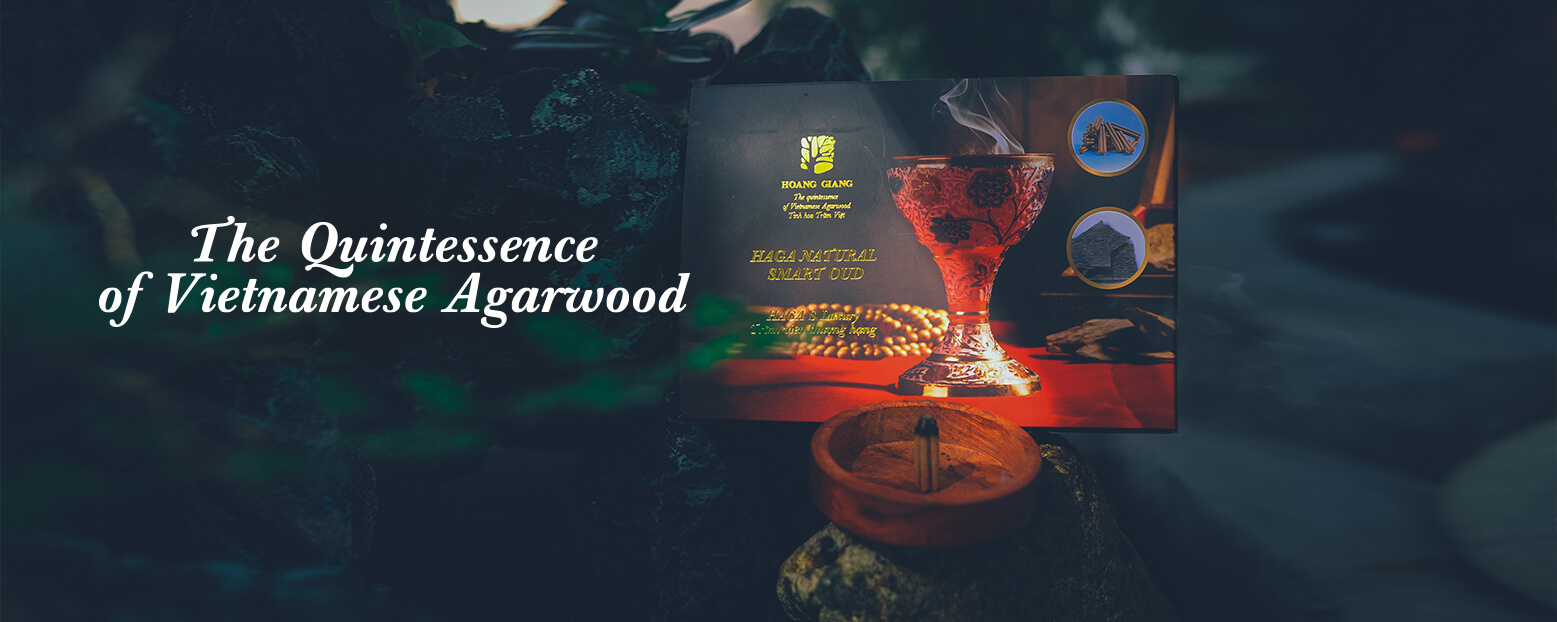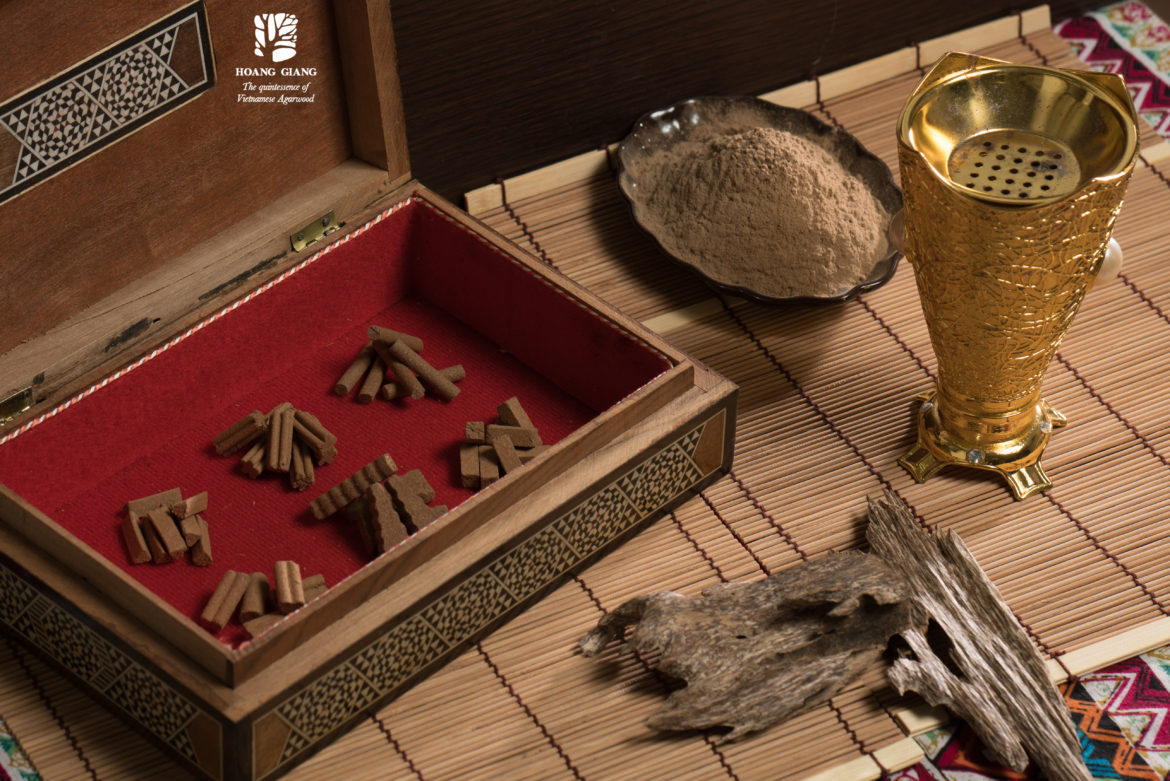Current uses of Agarwood (Oud) in some industries
Agarwood is pricier than gold. The legendary story has been passed on for generations. Because of the tremendous values of Agarwood, many people embrace the dream looking for natural Agarwood, despite all the hardships, danger in the sacred forest to change their life. In the past, Agarwood finding was an arduous and dangerous journey by “Phu Tram” (Agarwood seekers) in the deepest forest through day and night.

Agarwood (Oud) uses in fragrance production
Agarwood (Oud) was used in aromatherapy technology thousands of years ago. Agarwood (Oud) essential oil was used in the Middle East. In India, Agarwood (Oud) was classified into many different categories, was distilled separately and then blended together to create a kind of aromatherapy. This aromatherapy is used in chanting in traditional Muslims.
Aromatic Agarwood (Oud) is hardly pure Agarwood (Oud) essential oil, often is mixed with alcoholic or non-alcoholic. The cheapest aromatic Agarwood (Oud) is a combiation/ mixture of different oils, each type oil has different quality and fragrance. Some artificial aromatic substances available have poor quality because they do not share chemical formula with natural essential oil. Agarwood (Oud) essential oil is now used as aromatic substance in soap and shampoo making. In high end cosmetics industries, apart from function to keep product fragrance.
Agarwood (Oud) cannot produce fragrance if not being burned. When being burned, Agarwood (Oud) radiates fragrance and produce beneficial aromatic substances. Fragrance can be enjoyed through:
- Ditect burning of Agarwood (Oud) pieces: It will radiate fragrance at best. However, it is very expensive to enjoy this way because Agarwood (Oud) is flammable. In the past, just a few people enjoyed Agarwood (Oud) this way except the Kings and the wealthy.
- Agarwood (Oud) added to incense: slow burning of Agarwood (Oud) incense will produce fragrance. It is very economical to enjoy Agarwood (Oud) this way.
- Agarwood (Oud) essential oil is mainly used to produce aromatic substance. Essential oil is used in massages.

Agarwood (Oud) (Oud) uses in medicine
Agarwood (Oud) has been used as an antibody. There are very a few herbal plants in natural environment that share the same properties with Agarwood (Oud). The effectiveness of Agarwood (Oud) in medical treatments depends on oleoresin content of Agarwood (Oud). The main function of Agarwood (Oud) is to remove toxic gases, improve human body engery and stimulate blood circulation.
Agarwood (Oud) has been used for medicinal purposes for thousands of years and has been used traditional medicine in Ayuvedic, Tibet and East Asia. According to medical books of Susruta Samhita Ayuvedic, around the 8th century, people used Agarwood (Oud) in treating pleurisy. In traditional medicine of East Asia, Agarwood (Oud) is used to reduce pain, stop vomiting by warning the stomatch and to reduce asthma. In addition, powder of high grade Agarwood (Oud) is used to produce pigment in pharmacology. In Malaysia, Agarwood (Oud) is mixed with coconut oil, which is boiled to make a form of massage oils, which function to treat rheumatism and body aches. Agarwood (Oud) is also used to make a topical drug to treat smallpox and other stomatch ailments.

Agarwood (Oud) is listed in the prescription for edema disease, heartbeat stimulant medication, and is also used as a tonic medicine, especially during pregnancy, after childbirth. In Malaysia, Agarwood (Oud) powder has been used as sedative medicine, especially for patients and after birth ( Burkill, 1966). Agarwood (Oud) is used in nerve treatment and healing of depression and dementia. Inhalation of Agarwood (Oud) is to relieve stress, increase sedation and strengthen body resistance. Agarwood (Oud) is used as cinchoma, malaria and abdominal pain killers.

Agarwood (Oud) uses in producing incense
Agarwood (Oud) incense, when being burnt, produces a pleasant fragrance and always have an important role in the religious festivals of Islam, Buddhism and Hinduism. Shapes and and uses are different. Agarwood (Oud) incense is normally a few cm long and about 10-200 g in weight. Agarwood (Oud) incense can be cut in small pieces and then burned. Agarwood (Oud) powder and dust can not be burned directly in the way, but can be used to make incenses that can be burned to produce fragrance for the house.
Taiwanese people buy Agarwood (Oud) to make incense bars that are sold in Taiwan. In 1998, Agarwood (Oud) incense was used in traditionalchanting ceremonies and festivals to bring peace and luck. The Indian and the Chinese used Agarwood (Oud) as the main component in making incense bars in the past. However, incense bars do not often include any Agarwood (Oud) now. Indian traders reported that Indian incense bars for export could be added a drop of Agarwood (Oud) essential oil. Conical incense first was made of Agarwood (Oud) powder, and did not include Agarwood (Oud) because Agarwood (Oud) was very expensive.
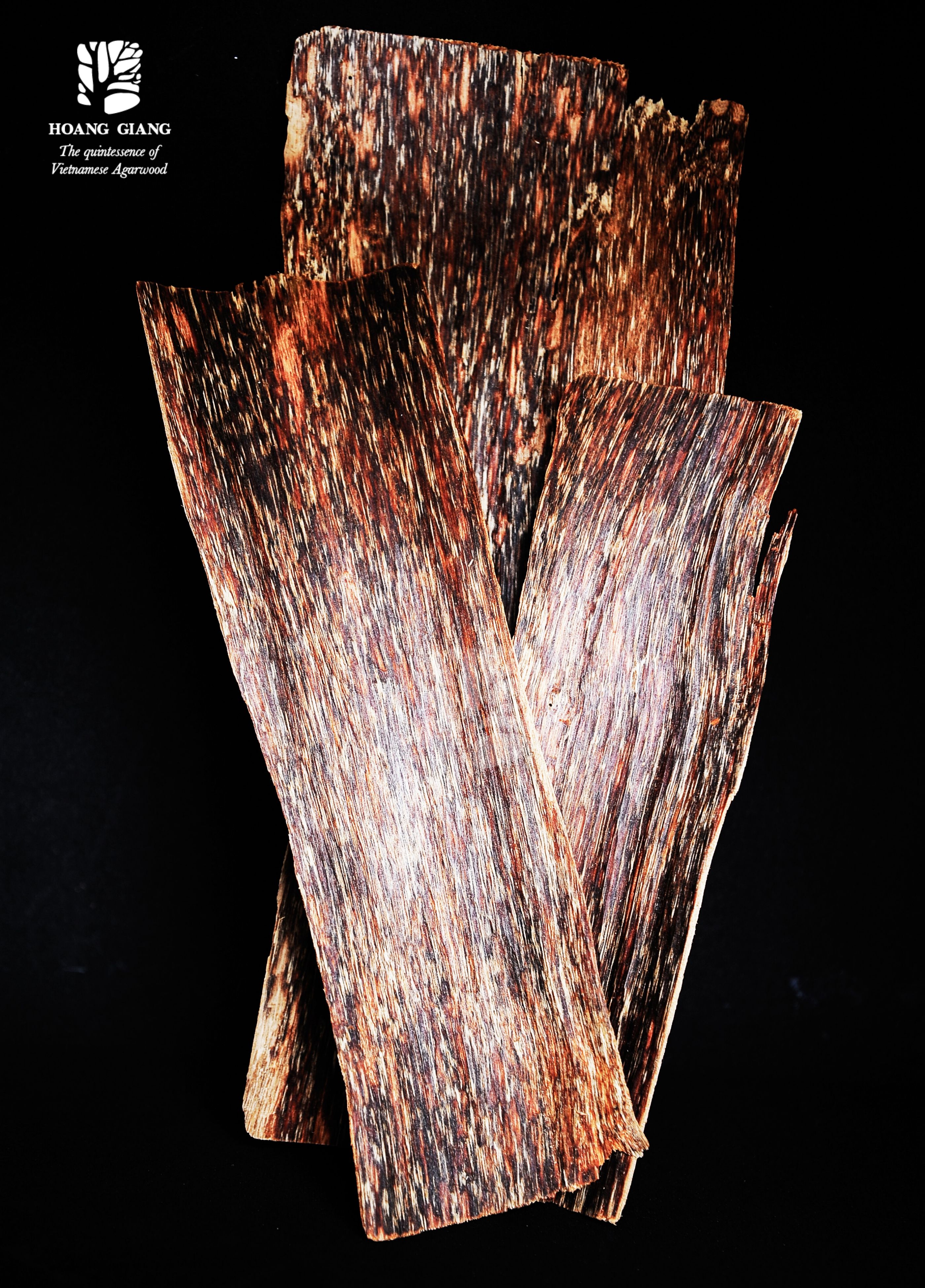
Japanese incenses are also different. The majority of high grade products were made of natural raw materials. Raw materials include substances extracted from crushed Agarwood (Oud) and other ingredients such as sandalwood and benzoin. All of these are then carefully molded to make bars. In Japan, Agarwood (Oud) bars can be burned as burning of incenses. A whole bar can be broken into smaller pieces, if necessary.
Therefore, a big size whole bar can be used for many years. In Japan, the rebirth of the ancient art of kodok and incense ceremonies revived concerns about Agarwood (Oud). In Malaysia, the Muslims burn Agarwood (Oud) debris or thin Agarwood (Oud) slices to create incenses in religious ceremonies, especially in harvest ceremonies. Agarwood (Oud) incenses can be burned in chanting in the Rmadan days. Severals tribes in Malaysia smoked agrawood in rice fields for local divine consolation and to eradicate disease and bring good harvests.
Agarwood (Oud) incenses are used for different purposes in the Middle East, especially in prayer meetings. Ceremony organizers put thin slices of Agarwood (Oud) incense on hot charcoal fragrance at the end of the festival.
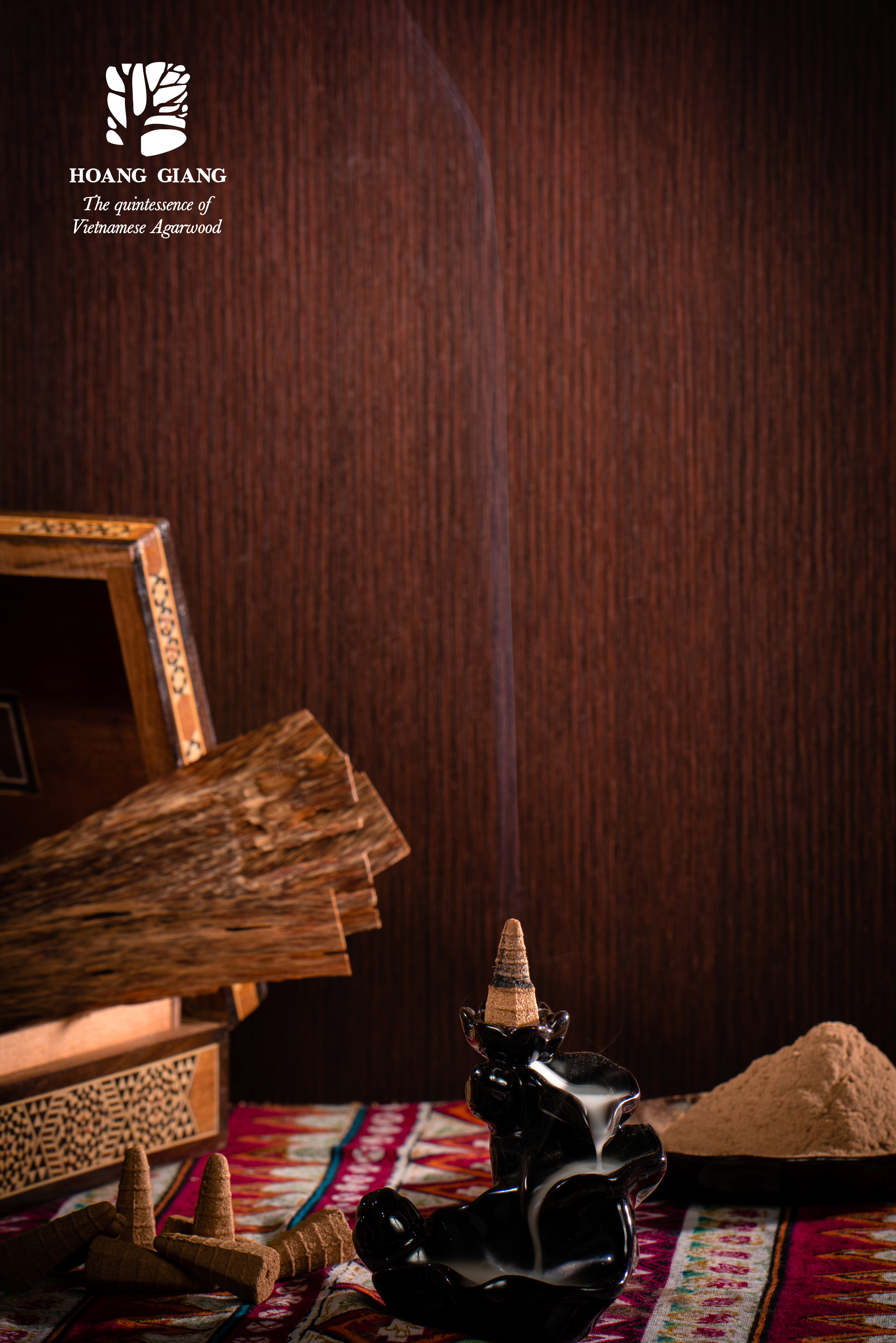
Other uses of Agarwood (Oud)
Uses of barks of Aquilaria crassna as subtances to replace papers to note the important books and religious sanctity has been widely used in Vietnam and from China. Agarwood (Oud) is the best embalming fluids because it has antibody features. In the Bible after Jesus died, Nicodemus used Agarwood (Oud) powder to mummy Jesus.
Agarwood (Oud) is also used to keep aromatic fragrance. Agarwood (Oud) is the necessary component in preparing aromatic fragrance in ancient Egypt. Agarwood (Oud) is used to make jewelry boxes, sculpture products, especially products for religious purposes such as Buddhist statues and agrawood rosaries. Indian rangers used Agarwood (Oud) to make the tea box.
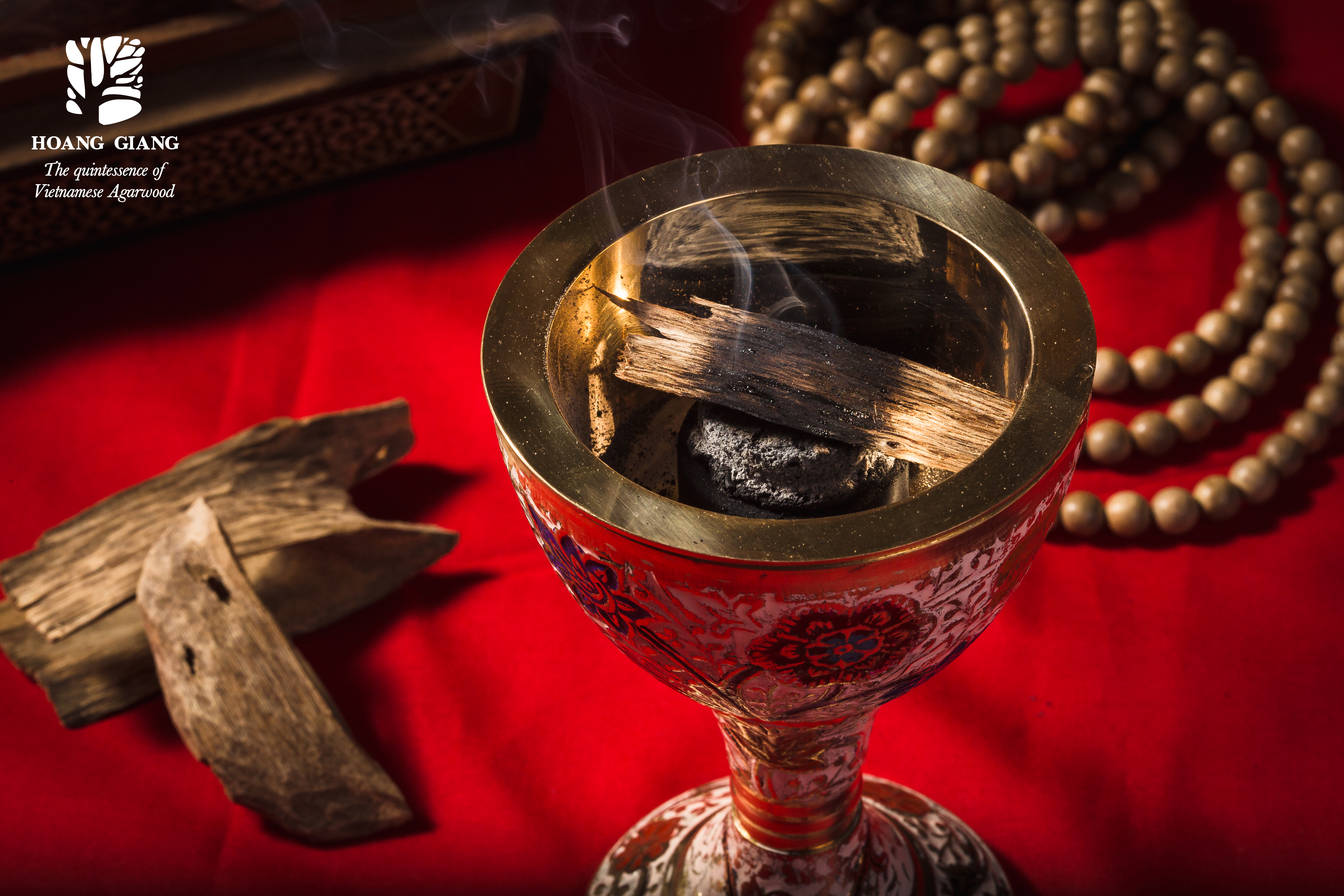
Agarwood (Oud) essential oil is sprayed on clothes and skin to repel effectively insect such as bugs, lice and fleas. Agarwood (Oud) essential oil is added to pyres and also used to mummify bodies for burial. In Malaysia, Agarwood (Oud) is used as alcohol to spray tombs. Barks of Aquilaria crassna are very tough and are used to make ropes or hammocks. Barks are also good raw material for making craft papers ( Aquilaria crassna paper, copy paper). In addition, barks are used to produce fabrics like linen or special paper.
In Japan, Agarwood (Oud) is used as spices for barbecues. In Taiwan, Agarwood (Oud) is one of the main component of the wine-yeh Chu Chinh and Vo Ky Pa. Through the above uses, Agarwood (Oud) has played an important role in the aromatherapy, pharmaceuticals and the spiritual world. Moreover, Agarwood (Oud) become rare in the natural emvironment, while Agarwood (Oud) has not been produced from plantations. It is the important role that Agarwood (Oud) play and the rarity of Agarwood (Oud) that make Agarwood (Oud) a great value.
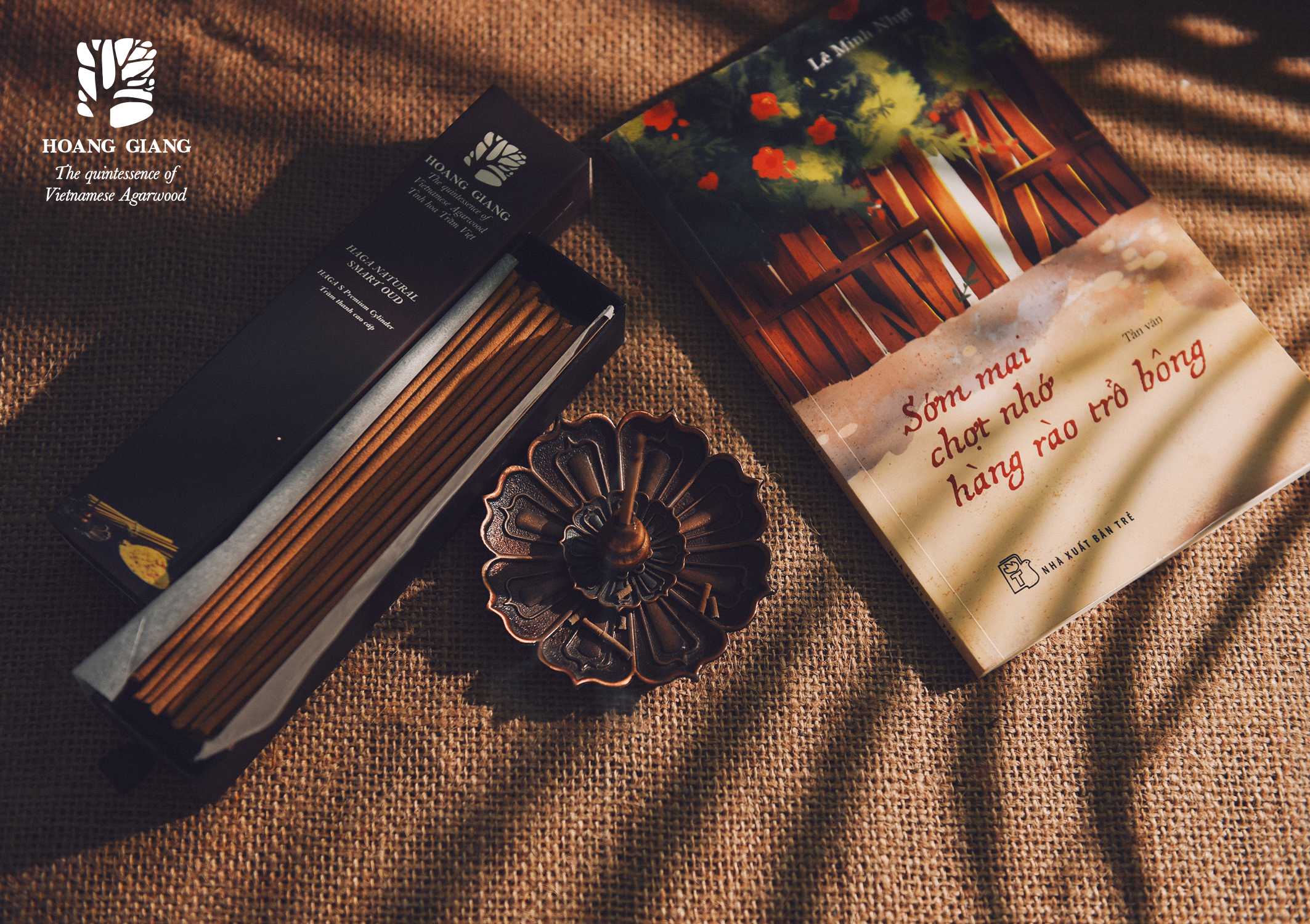
Hoang Giang Agarwood collect and compile
Why choose us – choose Hoang Giang Agarwood’s products
- Factory with modern production line from material to final product.
- 100% natural Agarwood/Oud ingredient.
- All products produced in accordance with ISO 9001: 2015 qualification standards, export qualification, non toxic chemicals.
- TOP 10 Key Players of Agarwood/Oud essential oil market in the world (Market Research Future 2017).

ISO 9001: 2015 certificated Agarwood (Oud) products, commit to production in accordance of Standard basic announced
On 08.05.2019, Hoang Giang Agarwood Co., Ltd has received an official copy of ISO 9001: 2015 certificate of Directorate for Standards, Metrology and Quality of AQS GLOBAL on product quality management, worldwide recognized for Agarwood (Oud) production and trading.
The ISO 9001: 2015 certificate of Hoang Giang Agarwood is valid for 3 years until April 25, 2022 and is periodically monitored and evaluated to ensure that Hoang Giang’s Agarwood (Oud) product quality always meets the standard certified.
ISO 9001: 2015 certificate assessed by a prestigious international organization is a safe quality assurance for all Agarwood (Oud) products of Hoang Giang, thereby helping customers and partners to feel secure when choosing and believing in Hoang Giang Agarwood (Oud) product in particular as well as Hoang Giang company in general.


LEAVE A REPLY below if you have any interest in making Hoang Giang Ltd. your best supplier. We always offer FREE SAMPLE for our customers.
See our products here
HOANG GIANG AGARWOOD CO., LTD.
Main office & Factory: Nguyen Minh Chau Street, Hiep Cuong Hamlet, Lagi Town, Binh Thuan Province, Vietnam.
Trade office: L40, Street No.11, Him Lam residential area, Tan Hung Ward, District 7, Ho Chi Minh City, Vietnam
Hotline: +84 973 770 639 (available on whatsapp & viber)
Email: info@hgagarwood.com
Website: hgagarwood.com

